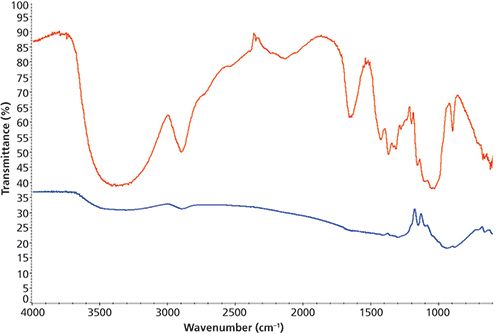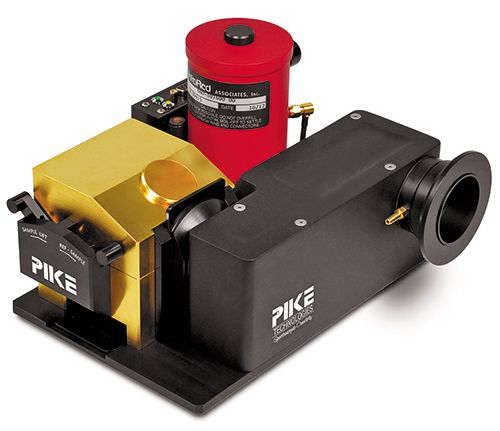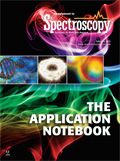Infrared Transmission Measurements of Diffuse Samples
Application Notebook
Measuring the transmission of diffuse samples such as paper or filled polymer films requires an integrating sphere to obtain accurate transmission values and useful chemical information, because the IR light is scattered as it passes through the sample. An integrating sphere serves as a collection device for the scattered light.
Using an integrating sphere, an infrared transmission spectrum of lens tissue representing a diffusely transmitting sample was collected and compared with a sample spectrum collected in the FT-IR sample compartment. Benefits of using an integrating sphere are discussed.
Measuring the transmission of diffuse samples such as paper or filled polymer films requires an integrating sphere to obtain accurate transmission values and useful chemical information, because the IR light is scattered as it passes through the sample. An integrating sphere serves as a collection device for the scattered light.
Experimental Conditions
Lens tissue was used as a model diffuse sample for this transmission experiment. An integrating sphere accessory equipped with a wide-band MCT detector (PIKE Technologies; Madison, WI) interfaced with a commercial FT-IR spectrometer was used to obtain a diffuse transmission spectrum. A transmission spectrum of the lens tissue was also collected by placing the sample inside the sample compartment of the FT-IR spectrometer equipped with a DTGS detector. At a resolution of 4 cm-1, 32 scans were co-added for both spectra.
Results
Mid-infrared integrating spheres are highly reflective gold enclosures that are placed in close proximity to the sample, such that in the case of transmission of a diffuse sample the scattered transmitted light enters the sphere, bounces around the diffuse surface of the sphere wall and finally impinges upon the detector. The name, integrating sphere, refers to one of the main functions of the device, namely that it spatially integrates the light flux.

Figure 1: Transmission spectra of diffuse lens tissue collected using a mid-infrared integrating sphere (red) and collected within the sample compartment using the spectrometer's detector (blue).
Optical lens tissue was used as a model system to illustrate the advantage of using an integrating sphere for transmission measurements. Optical lens tissue is graded for its structure and softness. It is made from new linen stock free of minerals and vegetable filler. Data presented illustrates the wealth of information obtained by collecting the scattered light caused by the diffuseness of the sample. Figure 1 compares the two spectra collected, one using the transmission port of the integrating sphere and the other by placing the sample in the beam path of the FT-IR sample compartment. The diffuse nature of the sample produced significant scattering of the beam after passing through the sample resulting in low transmission values and minimal useful chemical information when using the DTGS detector of the spectrometer. The spectrum collected using the integrating sphere yielded a vast amount of chemical information. At 3300 cm-1, the OH vibrations with hydrogen bonding are observed. Cellulose absorbance bands are located near 1000 cm-1. Relevant percent transmittance is also obtained, which may be correlated to fiber density. With the integrating sphere, transmittance is near 90% illustrating that most of the infrared beam passes through the sample whereas the transmittance from the spectrum collected with the sample placed in the FT-IR sample compartment was near 35% due to the scattering nature of the sample.

Figure 2: IntegratIR, integrating sphere accessory from PIKE Technologies, Inc.
Conclusions
A mid-infrared integrating sphere is an essential accessory to obtain transmittance and chemical information for diffusely transmitting samples.
PIKE Technologies, Inc.
6125 Cottonwood Drive, Madison, WI 53719
tel. (608) 274-2721
Website: www.piketech.com
